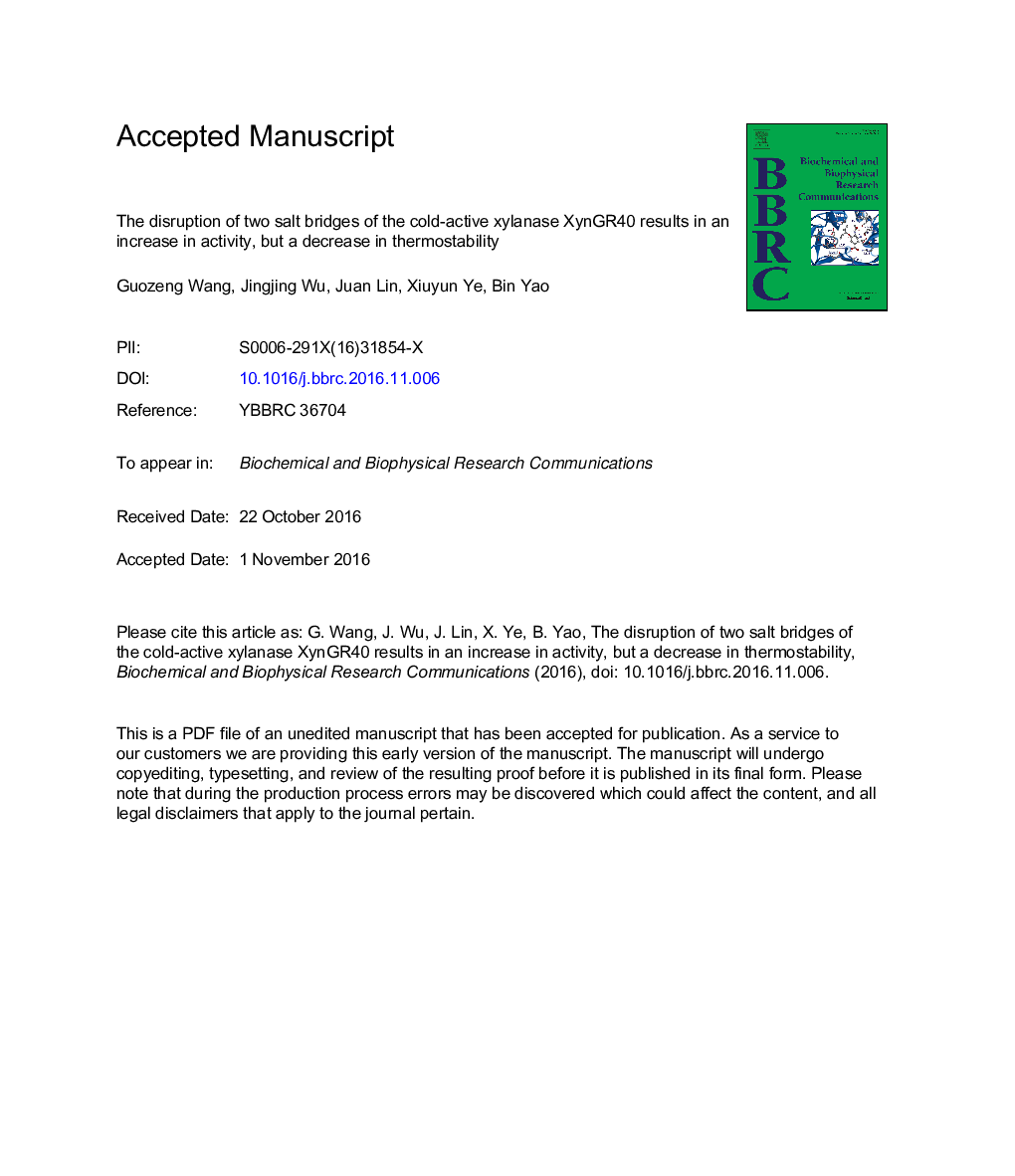| Article ID | Journal | Published Year | Pages | File Type |
|---|---|---|---|---|
| 5506485 | Biochemical and Biophysical Research Communications | 2016 | 29 Pages |
Abstract
Cold-active xylanases are of great interest due to their large potential for application in the food industry. In this study, salt bridges of the eight glycoside hydrolase (GH) family 10 cold-active xylanases reported to date were predicted and the salt bridges specific to the cold-active xylanase XynGR40 were identified. Seven mutants were constructed to disrupt salt bridges specific to XynGR40. The results suggested that five mutants lost their xylanase activity, while the other two mutants, D30N and D83N, displayed different properties when compared with the wild-type XynGR40. First, both mutations showed an obvious decrease in thermostability, with the T1/2 of D30N and D83N at 50 °C being about one half and one sixth of the wild-type, respectively. Second, both D30N and D83N had a higher specific activity than the wild-type, with activities about 13 and 163% higher, respectively. Third, both D30N and D83N had high kcat and Km values, which resulted in a higher catalytic efficiency of the mutant D83N, but a lower catalytic efficiency of the mutant D30N compared to the wild-type. Our results suggested that salt bridges play important roles in both the activity and thermostability of the cold-active xylanase XynGR40. The mutant D83N had a higher kcat and higher relative activity at low temperatures than the wild-type, and is a good candidate for application in the food industry.
Related Topics
Life Sciences
Biochemistry, Genetics and Molecular Biology
Biochemistry
Authors
Guozeng Wang, Jingjing Wu, Juan Lin, Xiuyun Ye, Bin Yao,
